Literacy
Chris Catterall (P-2) and Jemma McVeigh (3-6)

Literacy
Chris Catterall (P-2) and Jemma McVeigh (3-6)
THE WRITING CYCLE
The writing cycle is intended to mimic the process that professional authors follow when writing. Before a storybook is published, it'll undergo plenty of drafting stages, edits, and final checks. Following the same steps as a real author, the children feel very proud of themselves and their finished product.
(Depending on the purpose of the writing task not every piece written in class follows the process through to publishing.)
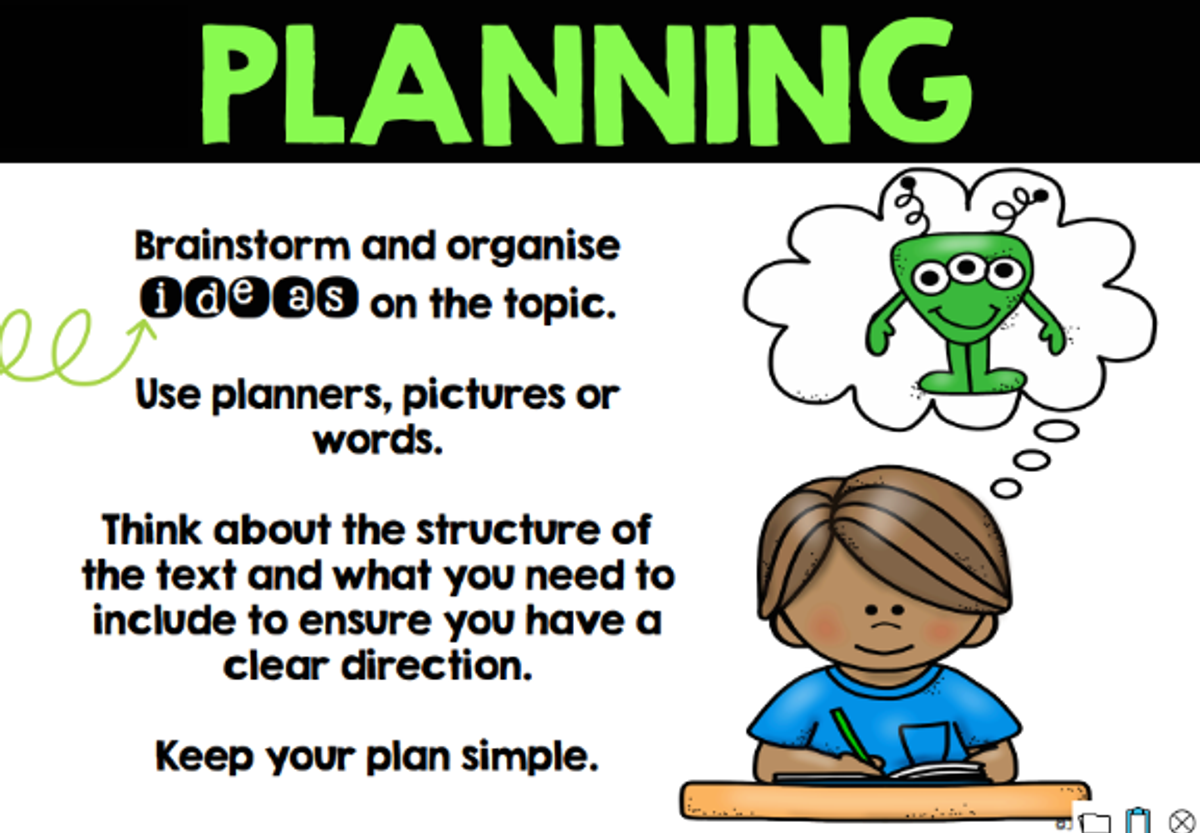

Planning
When first given a writing stimulus, children are encouraged to plan their work. At this point, they are asked to consider the genre, audience, and purpose of the text they are writing. This will help them make key decisions later on in the writing process, such as language choice. This planning can be done on a piece of blank paper, or using a structured writing frame. Children can also begin to think about the content of their piece - what ideas, concepts, or messages do they want to include?
Drafting
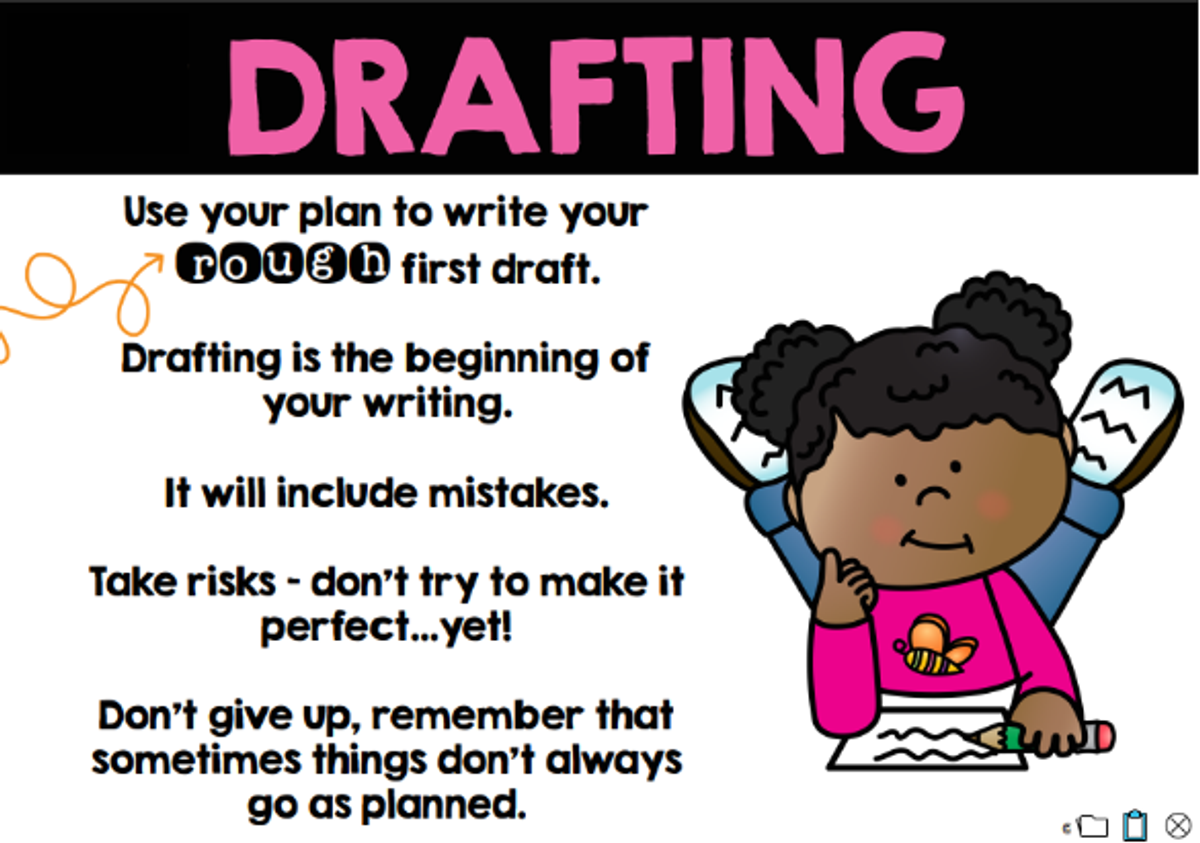

Once they've got their initial ideas down, children can then move onto the drafting stage. This is where they start getting sentences onto paper, and sorting different ideas into paragraphs (if applicable). At this stage the writing doesn't have to be perfect, the main focus is getting ideas formulated and written down in a structured way.
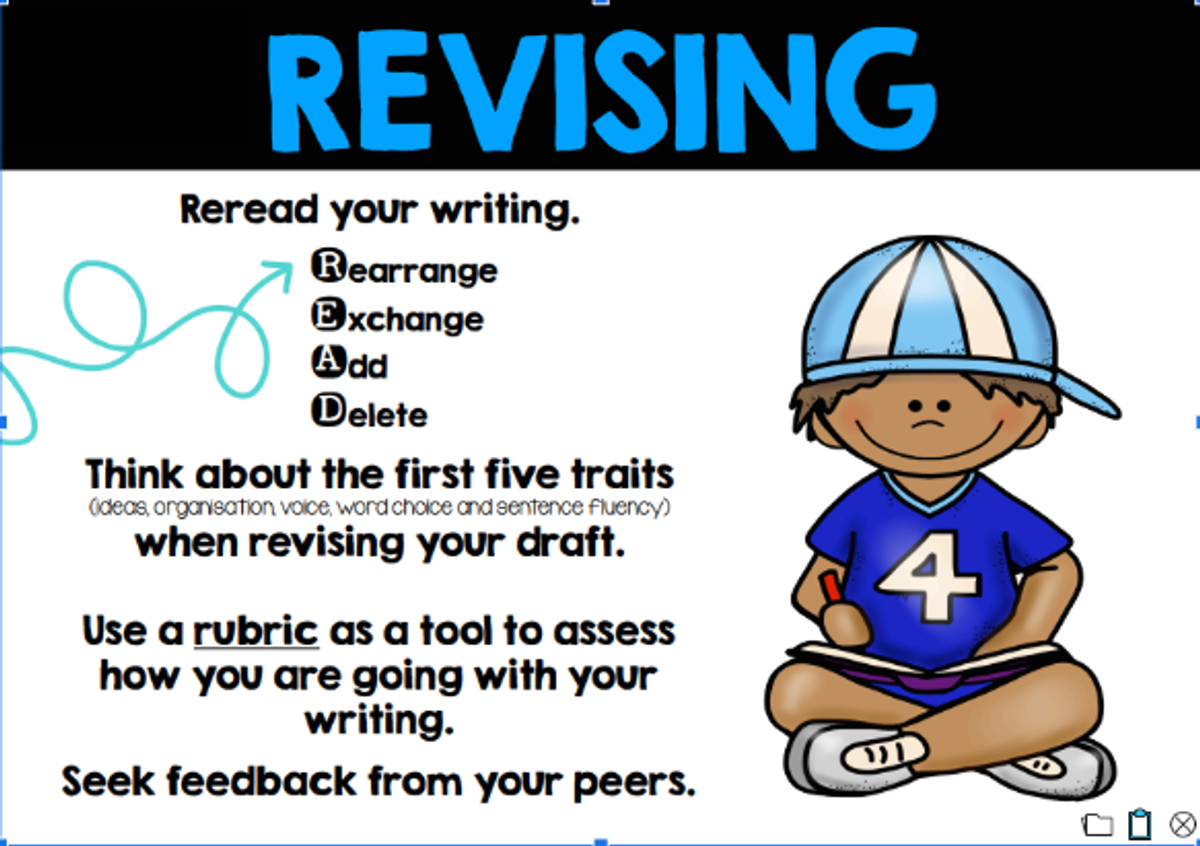

Revising
At the revising stage, the children have the majority of their ideas written down. They reread over what they've written. Does everything make sense? Is it written in a logical order? They are encouraged to ask a teacher or a friend to look over the writing, to see if there is anything that could be written differently.
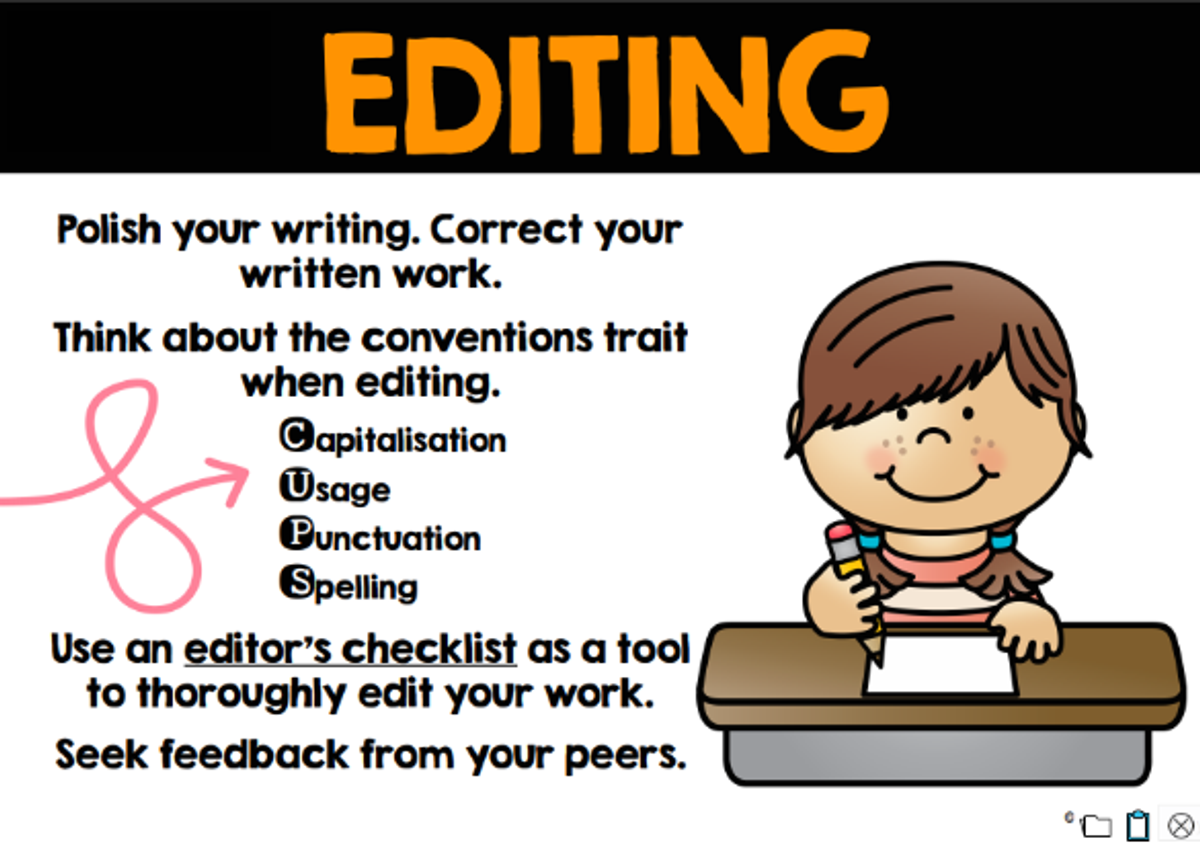

Editing
This is when the children are polishing up their writing and adding finishing touches. They are encouraged to go through a checklist, making sure that spelling, punctuation and grammar is all correct. This develops children's proofreading skills, which are essential for later life, and also deepens their grammatical understanding.
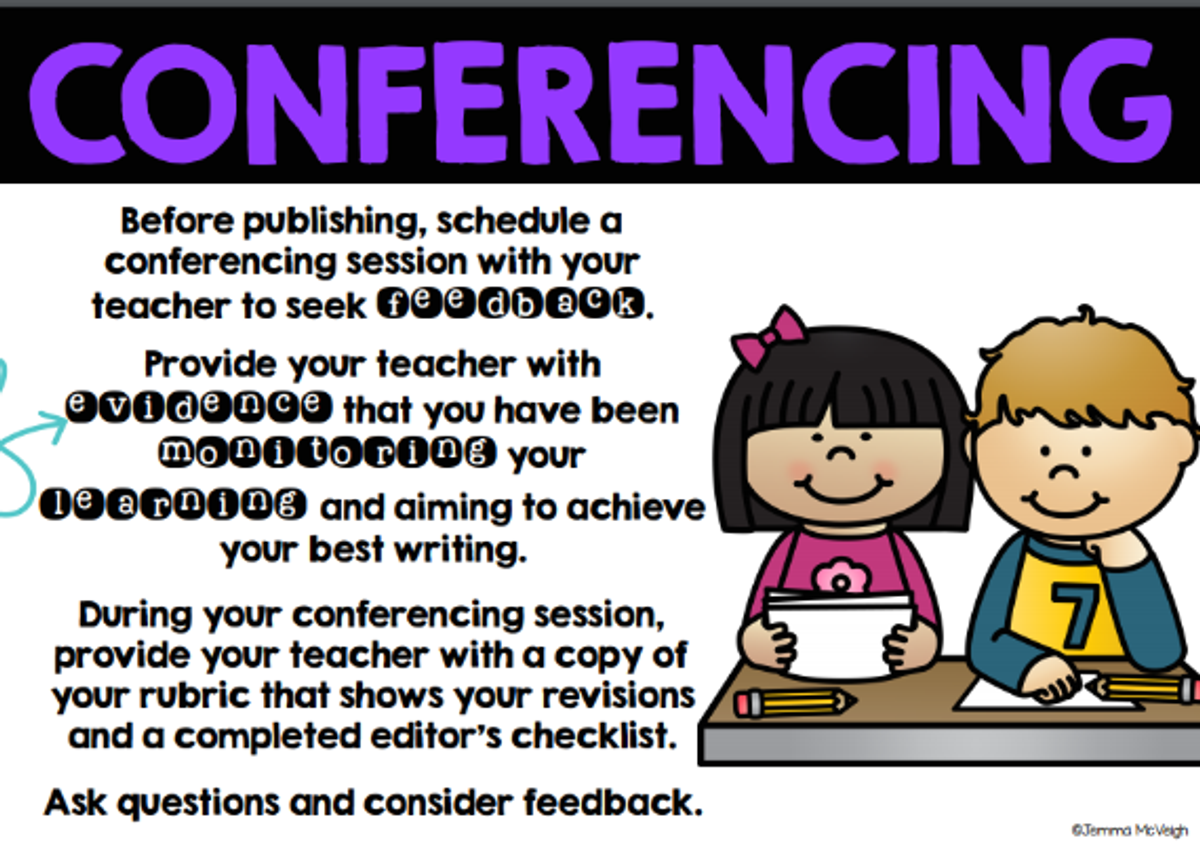

At this point, a final conference is conducted with the teacher to check all the steps have been followed correctly and the piece is ready to be published.
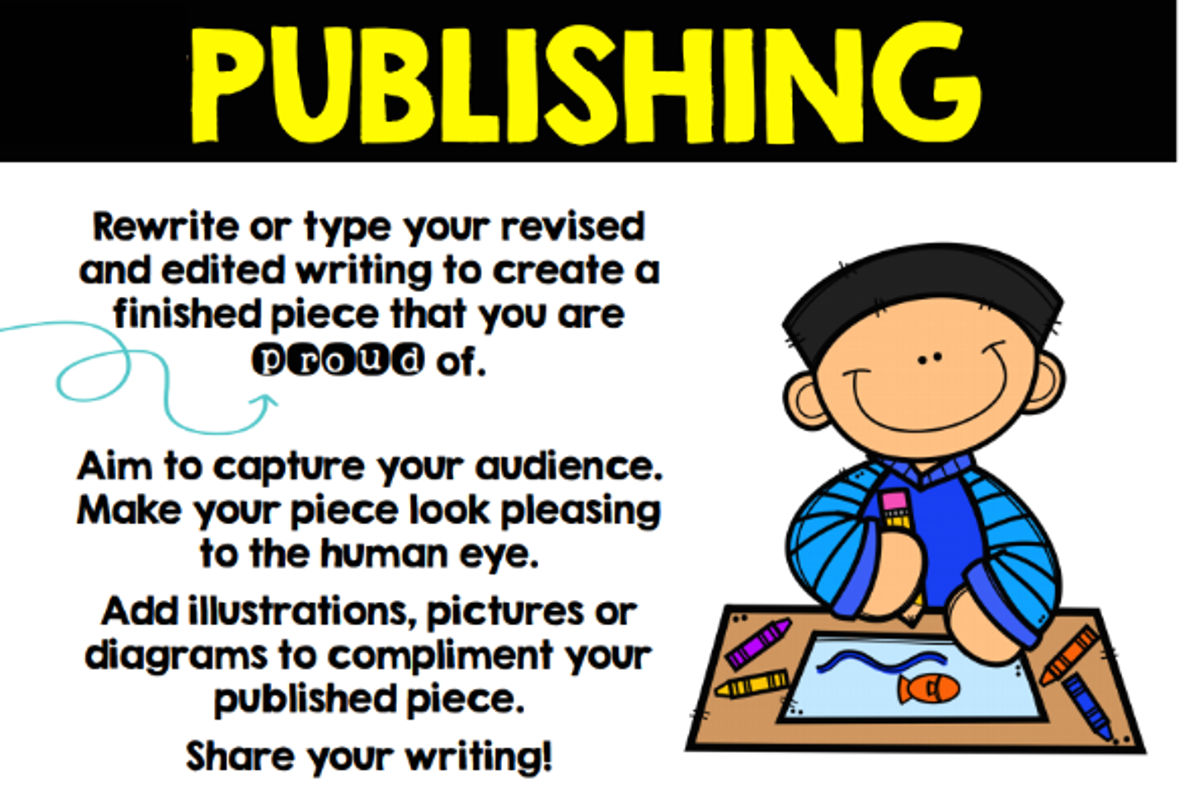

Publishing
Children select a way to publish their piece and add illustrations, pictures of diagrams. Once published, they are ready to share with an audience. This could be reading aloud to their peers or family or putting it on display for a wider audience to read. When this whole process has ended, children should give themselves a big pat on the back!
Chris Catterall and Jemma McVeigh